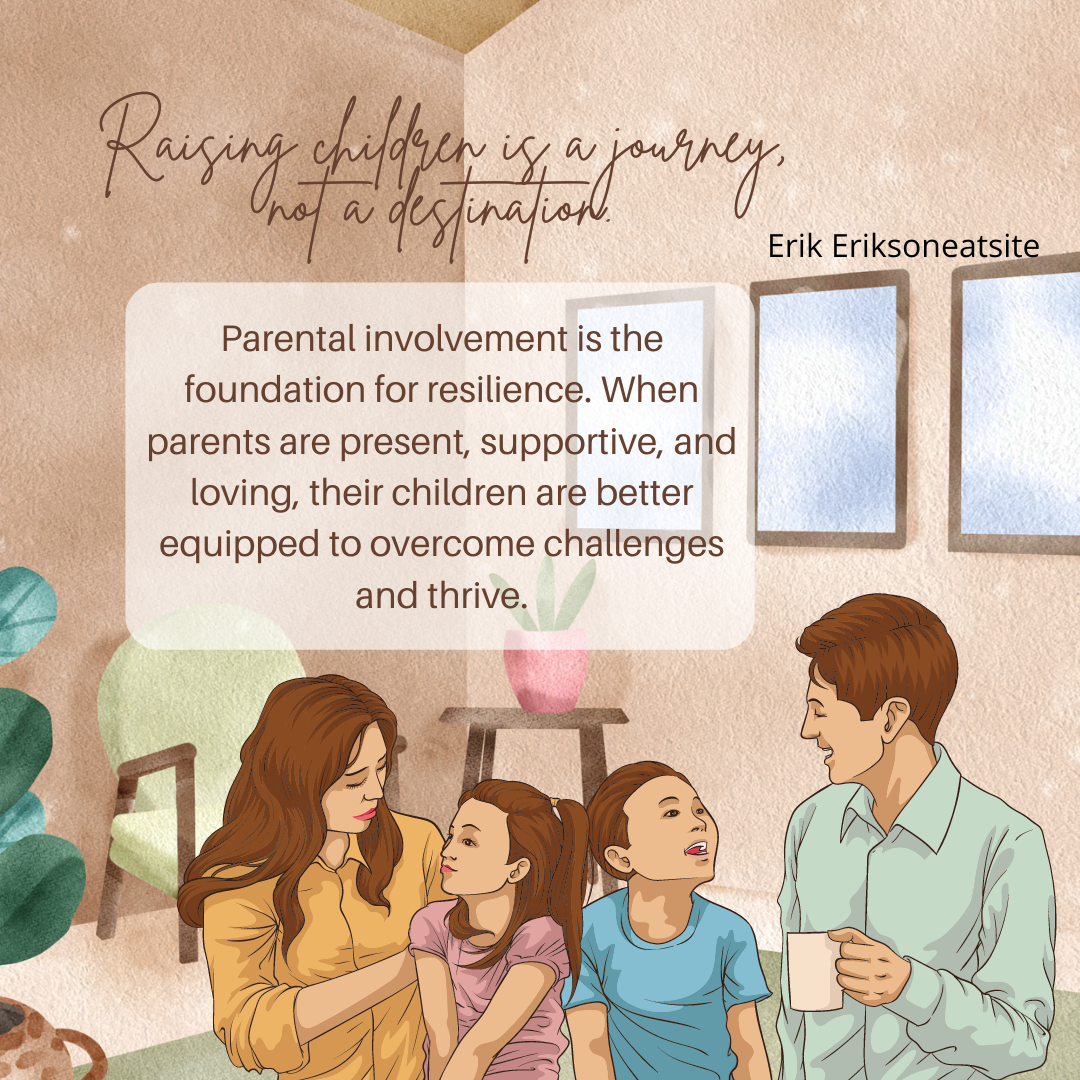Introduction
Resilience is a powerful quality that enables individuals to bounce back from adversity and navigate life’s challenges with strength and determination. For young people, resilience is especially crucial as they face various hurdles on their journey to adulthood. It is the capacity to adapt to change, overcome adversity, and thrive in the face of difficulties. One vital factor in nurturing resilience is parental involvement. When parents actively engage in their children’s lives, offering support, resources, and guidance, they lay the foundation for building resilience and fostering their child’s ability to overcome obstacles.
What is Resilience?
Resilience is a multifaceted concept that psychologists and researchers have extensively studied. It encompasses the capacity to adapt to change and effectively confront adversity. Resilience enables individuals to bounce back from setbacks, remain hopeful in challenging situations, and develop coping mechanisms to navigate through difficulties. While some individuals may possess a natural inclination toward resilience due to their genetic makeup, various factors contribute to its development.
- Genetics: Some people may have a genetic predisposition to resilience, which influences their ability to cope with stress and bounce back from challenging circumstances.
- Early experiences: Positive early experiences, characterized by a loving and supportive home environment, play a significant role in shaping a child’s resilience. A nurturing and secure environment provides a solid foundation for emotional well-being and the development of adaptive coping skills.
- Coping skills: Learning how to cope with stress and difficult emotions equips children with valuable tools for resilience. Teaching children effective coping strategies, such as problem-solving, emotion regulation, and seeking support, empowers them to navigate challenges with confidence.
- Social support: Building strong social support networks, including friends, family, and teachers, provides children with additional sources of resilience. Positive relationships and connections foster a sense of belonging, security, and encouragement during difficult times.
The Role of Parental Involvement
Parental involvement emerges as a critical factor in nurturing resilience among young people. When parents actively participate in their children’s lives, they offer essential support, resources, and guidance necessary for the development of resilience. By being actively present and engaged, parents create an environment that fosters growth, emotional well-being, and the acquisition of necessary life skills. Here are some effective ways parents can promote resilience in their children:
- Set clear expectations and boundaries: Clearly defining expectations and the consequences of breaking rules helps children feel secure and establishes a sense of safety conducive to resilience. When children know what is expected of them, they are more likely to develop a sense of responsibility and self-discipline (Benard, 2004).
- Provide positive reinforcement: Recognizing and praising children’s achievements and efforts contribute to the development of a positive self-image, a key aspect of resilience. Encouraging children to celebrate their accomplishments and acknowledging their strengths helps build confidence and resilience (Masten, 2011).
- Be a good role model: Children learn by observing the adults in their lives. Modeling resilience involves approaching challenges with positivity and constructiveness, thereby inspiring children to do the same. Demonstrating effective problem-solving skills, adaptability, and perseverance teaches children valuable life lessons (Werner & Smith, 2001).
- Encourage emotional expression: Assisting children in understanding and expressing their emotions in a healthy manner equips them with the emotional intelligence needed for resilience. Encourage open and honest communication, validate their feelings, and provide a safe space for them to express themselves (Benard, 2004).
- Help your child develop social skills: Social skills are essential for resilience. Children who have strong social skills are better able to navigate social situations, seek support, and build positive relationships. Encourage your child to interact with others, practice empathy, and develop effective communication skills.
- Provide opportunities for growth: Continuous learning and personal growth contribute to resilience. Encourage your child to explore new activities, challenge themselves, and embrace opportunities for learning and self-improvement. By fostering a growth mindset, you empower them to view setbacks as learning experiences rather than failures.
Tips for Parents
As parents, you play a vital role in fostering your child’s resilience. Here are a few tips to help you on this journey:
- Be patient: Developing resilience takes time and effort. Do not be discouraged if your child does not exhibit resilience overnight. Be patient and provide ongoing support and encouragement.
- Be consistent: Consistency is key in promoting resilience. Set clear expectations, offer consistent support, and model resilient behaviors. Consistency helps children develop a sense of stability and predictability, contributing to their resilience.
- Seek professional help if needed: If you find it challenging to support your child’s resilience or if they are facing significant difficulties, do not hesitate to seek professional assistance. Mental health professionals and counselors can provide valuable guidance and support.
Conclusion
Parental involvement is a fundamental factor in fostering resilience among young people. By actively engaging in their children’s lives, parents provide the necessary support, resources, and guidance for the development of resilience. Through clear expectations, positive reinforcement, role modeling, emotional support, and opportunities for growth, parents can nurture their child’s ability to bounce back from adversity and thrive in the face of challenges. By following the tips outlined in this blog, you can make a significant impact on your child’s resilience, enabling them to become well-rounded individuals prepared to tackle life’s obstacles with resilience and determination.
References
Benard, B. (2004). Resiliency: What we have learned. San Francisco: Jossey-Bass.
Garmezy, N. (1991). Resiliency and competence in children at risk. In A. R. Sameroff & M. Lewis (Eds.), Handbook of developmental psychopathology (pp. 213-238). New York: Plenum Press.
Henderson, N., & Milstein, M. (1996). Resiliency in schools: Making it happen. Thousand Oaks, CA: Corwin Press.
Masten, A. S. (2011). Ordinary magic: Resilience in development. New York: Guilford Press.
Werner, E. E., & Smith, R. S. (2001). Journeys from childhood to midlife







Tharushi Imasha Kumarasiri
Jun 30, 2023
0